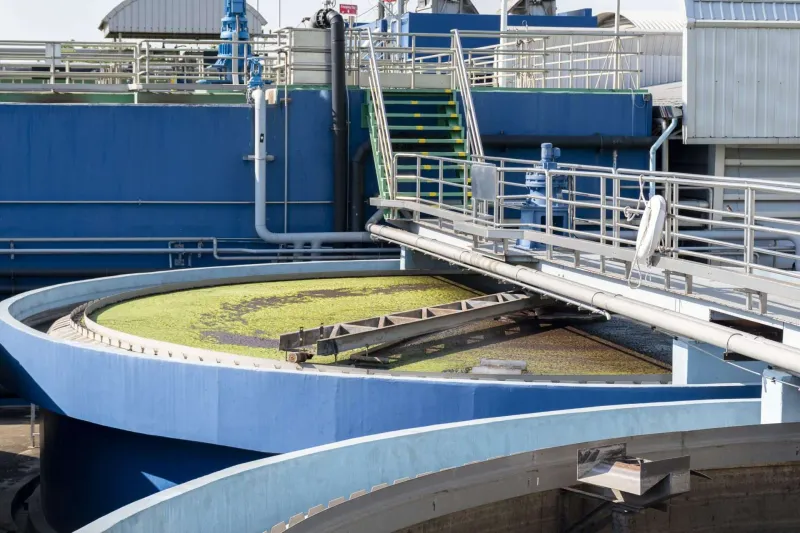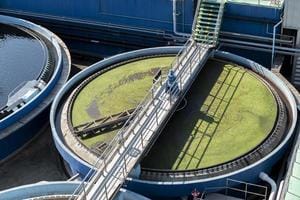Removing Total Suspended Solids (TSS) from Effluent to Improve Wastewater Treatment
Improving Wastewater Treatment
Wastewater treatment is a crucial element in managing and minimizing the adverse impacts of human activity on the environment. Because it directly affects water quality, total suspended solids (TSS) is one of the numerous factors that should be taken into account. Increased TSS can transfer contaminants, reduce light penetration, and damage aquatic ecosystems. This comprehensive book examines the best methods, instruments, and strategies for optimizing TSS removal in wastewater treatment.

Understanding Total Suspended Solids (TSS)
Total Suspended Solids refer to the particles suspended in water that are not dissolved. These particles can range from fine silt and organic matter to industrial waste. Monitoring and controlling TSS is essential because high levels can affect water quality, harm aquatic life, and increase the operational costs of treatment plants.
The Importance of TSS Removal
Effective TSS removal is vital for several reasons:
1. Water Quality Improvement: Reducing TSS improves the clarity and quality of water, making it safer for human consumption and recreational use.
2. Environmental Protection: Lowering TSS levels minimizes the impact on aquatic ecosystems, preserving biodiversity and promoting healthy habitats.
3. Regulatory Compliance: Adhering to stringent environmental regulations regarding TSS levels ensures compliance and avoids potential fines or legal issues.
4. Operational Efficiency: Effective TSS management reduces the wear and tear on treatment equipment, leading to lower maintenance costs and prolonged lifespan of infrastructure.
Primary Treatment Processes for TSS Removal
Primary treatment focuses on removing large solids and preparing the wastewater for secondary treatment. Key processes include:
Screening: The initial step involves screening to remove large debris and coarse solids. Bar screens and fine screens are commonly used to capture and remove these particles.
Grit Removal: Grit chambers or cyclones are employed to remove heavier inorganic particles like sand and gravel. This step prevents abrasion and blockages in downstream processes.
Sedimentation: Primary clarifiers or settling tanks allow suspended solids to settle by gravity. The settled sludge is then removed and processed separately.

Secondary Treatment Techniques
Secondary treatment aims to remove dissolved and colloidal organic matter, including finer suspended solids. Common methods include:
Activated Sludge Process: This biological treatment involves aeration tanks where microorganisms break down organic matter, including suspended solids. The resulting biomass is settled in secondary clarifiers.
Trickling Filters: Wastewater is distributed over a bed of media, where biofilms of microorganisms degrade organic matter. The treated water is then clarified to remove remaining solids.
Rotating Biological Contactors (RBCs): RBCs use rotating discs to support biofilm growth. As the discs rotate, they alternately expose the biofilm to wastewater and air, facilitating organic matter degradations.
Advanced Treatment Options
For stringent TSS limits or specific industrial requirements, advanced treatment methods are necessary:
Membrane Filtration: Technologies such as microfiltration (MF) and ultrafiltration (UF) provide high-efficiency TSS removal. These membranes physically separate suspended solids from water.
Chemical Coagulation and Flocculation: Adding coagulants (e.g., aluminum sulfate) and flocculants (e.g., polyacrylamide) causes fine particles to aggregate into larger flocs, which can be easily settled or filtered out.
Dissolved Air Flotation (DAF): DAF introduces fine air bubbles into the wastewater, attaching to suspended solids and floating them to the surface for removal.
Operational Considerations for Optimal TSS Removal
To achieve optimal TSS removal, several operational factors must be managed:
Monitoring and Control: Regular monitoring of TSS levels is essential for process control. Automated sensors and online analyzers provide real-time data, enabling prompt adjustments.
Chemical Dosage Optimization: Proper dosing of coagulants and flocculants is crucial. Overdosing can lead to excess sludge production, while underdosing can result in inadequate TSS removal.
Sludge Management: Efficient handling and disposal of sludge generated during TSS removal are vital. Sludge dewatering and stabilization processes reduce volume and improve disposal options.
Maintenance of Equipment: Routine maintenance of treatment units, such as clarifiers, filters, and membranes, ensures consistent performance and prevents operational disruptions.

Emerging Technologies and Innovations
The field of wastewater treatment is continually evolving, with new technologies emerging to enhance TSS removal:
Advanced Oxidation Processes (AOPs): AOPs, such as ozone and UV/Hydrogen Peroxide, can break down complex organic pollutants and improve TSS removal efficiency.
Electrocoagulation: This electrochemical process uses electric currents to destabilize suspended particles, facilitating their aggregation and removal.
Hybrid Systems: Combining multiple treatment methods, such as membrane bioreactors (MBRs), integrates biological and membrane filtration processes for superior TSS removal.
Best Practices for Effective TSS Management
Implementing best practices can significantly enhance TSS removal outcomes:
Regular Training and Skill Development: Training plant operators on the latest techniques and technologies ensures efficient operation and troubleshooting of treatment processes.
Collaborative Approach: Engaging stakeholders, including regulatory bodies, industry experts, and local communities, fosters a holistic approach to wastewater management and continuous improvement.
Sustainable Practices: Emphasizing sustainability, such as resource recovery from sludge and energy-efficient technologies, aligns wastewater treatment with broader environmental goals.
Conclusion
Effective management of Total Suspended Solids (TSS) in wastewater treatment is essential for safeguarding water quality, meeting regulatory requirements, and ensuring the sustainability of operations. This comprehensive approach involves robust primary treatment processes like screening, grit removal, and sedimentation, which are crucial for removing larger solids. Secondary treatment techniques, including activated sludge, trickling filters, and rotating biological contactors, further degrade organic matter and fine suspended solids. Advanced methods, such as membrane filtration and chemical coagulation, provide higher efficiencies for stringent TSS removal, addressing specific industrial needs and enhancing overall treatment performance.
Operational considerations, including real-time monitoring, optimized chemical dosing, effective sludge management, and regular equipment maintenance, are vital for achieving consistent TSS removal. Innovations like advanced oxidation processes and electrocoagulation offer promising solutions for enhancing treatment efficacy. By implementing best practices such as ongoing operator training, stakeholder collaboration, and sustainable resource recovery, wastewater treatment facilities can improve operational efficiency and reduce environmental impact. Embracing a holistic approach not only ensures superior TSS management but also contributes to cleaner water and a healthier ecosystem for future generations.